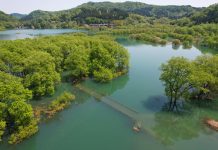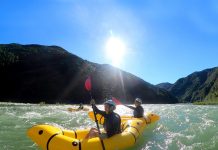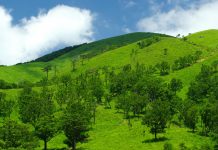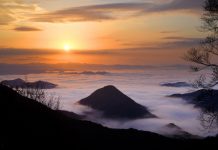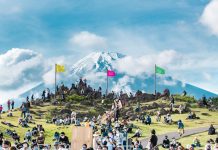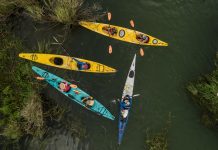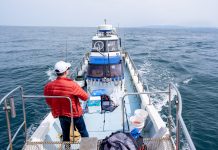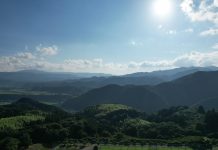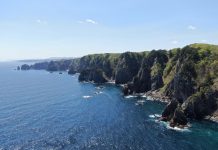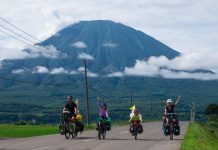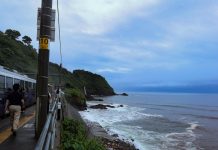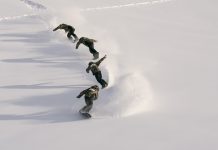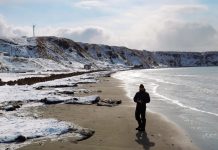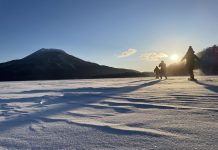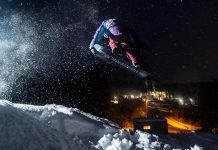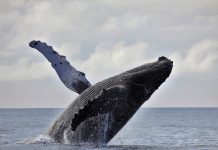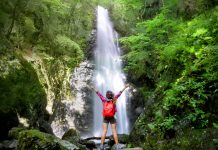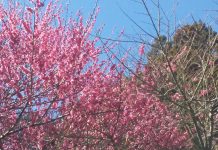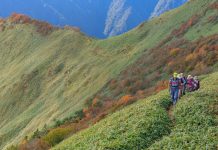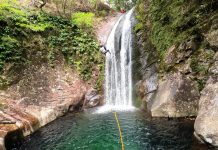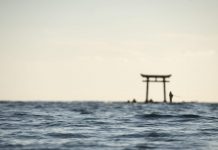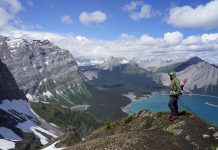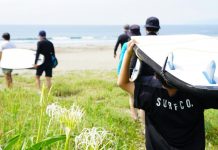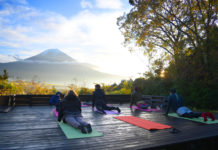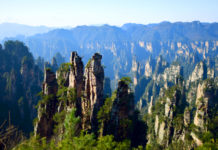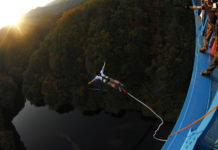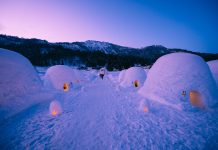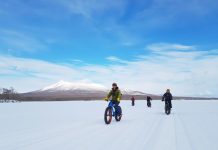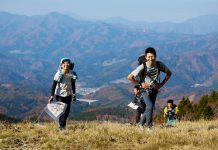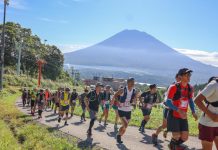Mt. Kanaya is an unremarkable hill. Arrive in summer, and the short chairlift is running visitors to the top, so they can ride a wheeled bobsled down a concrete track. It’s certainly a pleasant place, with one of Japan’s finest BMX courses tucked into the woods at the base, but it’s a hill—more like the mini-ski areas on which I learned in Midwest America.

It’s the statue on the way up, and the little museum at the end of the drive, that gives a hint of the importance of this small mountain on the west side of Joetsu, Niigata.
On Jan. 12, 1911, Maj. Theodore Edler von Lerch, an officer of the Austro-Hungarian Army, held the first ski lesson ever in Japan by swooping down Mt. Kanaya without falling. To the Japanese military officers watching, this must have seemed as alien as if Lerch had simply risen and flown down the hill, judging by their spontaneous cries of, “Banzai!”
But they weren’t just spectators; Lerch’s ski lessons for them began the next day, meaning that in January of 2011, skiing in Japan will be officially 100 years old.
That it happened in this place and at that time was an interesting collision of military intelligence and personal interest. It began as Japan beat the Russians in the war of 1904 and 1905. Just barely out of its feudal past, Japan was the clear underdog in its battle for the empire in northeast Asia. But the Japanese had a string of military victories, capped with the destruction of the Russian fleet itself.
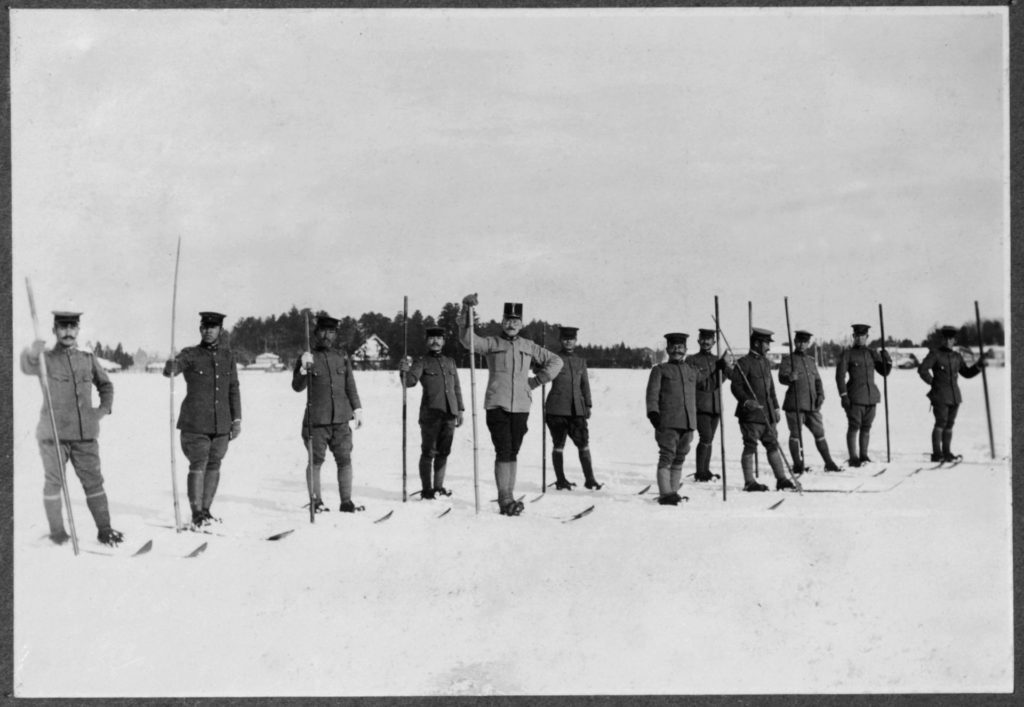
It meant military officers from around the world were racing to Japan to find out just how this little country had beaten its massive adversary.
Lerch, having heard about the deep powder snow in parts of Japan (some things don’t change over a century), brought two pairs of skis along with his notebooks. He had no particular intention to teach skiing, it seems, but the Japanese had their own ideas.
Lt. Gen. Gaishi Nagaoka, a man with absolutely amazing facial hair in a time when most men were mustached, had been military attaché in Germany, spoke German and was the commander of the 13th Infantry Division of the Japanese Army.
The 58th Infantry Regiment in Takada, Niigata (part of what is today known as Joetsu), fell under his command. He knew about skiing and about Lerch and arranged for him to come to teach the regiment.
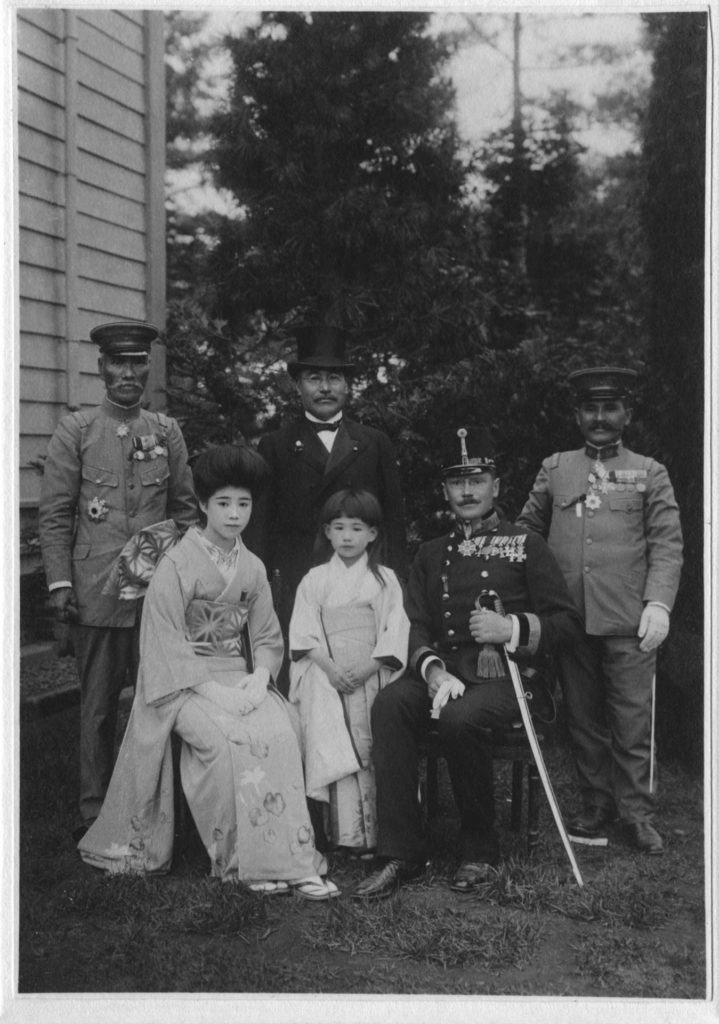
If foreigners feel like they stick out in today’s Japan, think about Lerch’s arrival in this snowy town by the Japan Sea. Most everyone turned out to welcome (or try to get a look at) the major; the local Takada Shimbun sternly instructed, “The people of Takada are representing the Japanese people, and the regiment is representing the Japanese Army,” so the people needed to be on their best behavior, with, “no urinating outdoors or walking around barefoot.”
They probably didn’t need to worry too much. In many of the photos which exist from the time, Lerch doesn’t look the kind to worry about someone taking a surreptitious leak behind a tree. In fact, the image shows a physically strong and happy man, whether in formal wear at parties or with his arm around his students grinning and skiing.
And ski he did in Japan. When he arrived, he met with the regiment Commander, Col. Bunjiro Horiuchi, who had also had some experience with Nordic skiing overseas. They arranged for the army supply service in Tokyo to build some skis based on the two pairs Lerch brought. Within two weeks, the skis were in Takada, ready for the lessons.
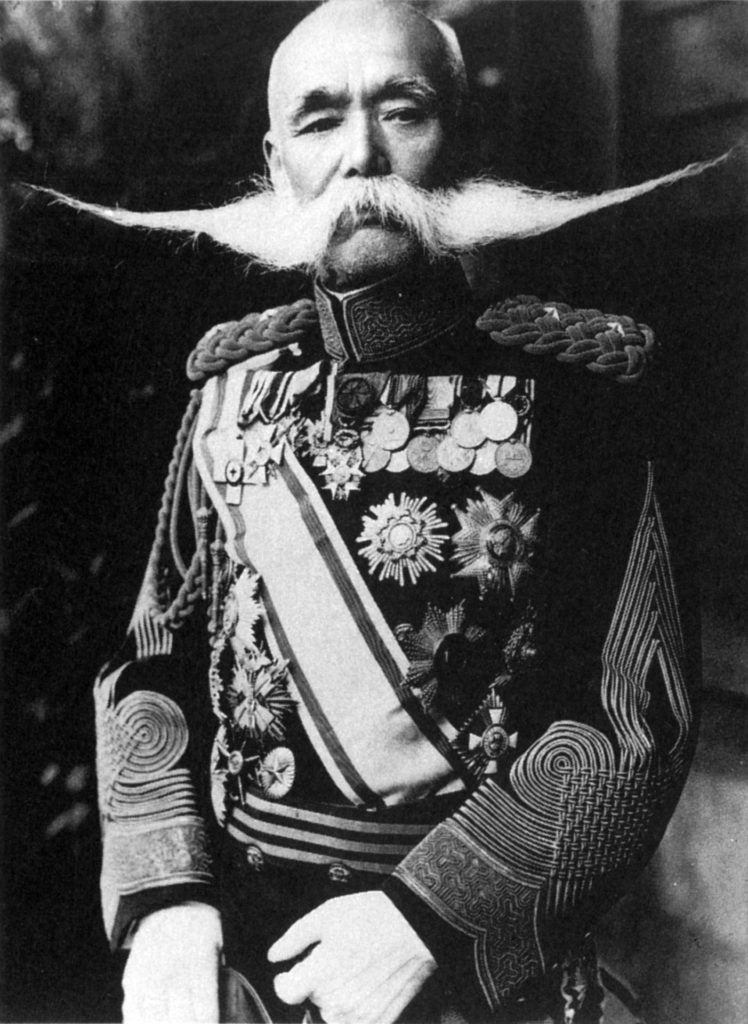
He taught in Takada, giving the students, including Col. Horiuchi, two or three lessons a week. He later organized a ski tour of neighboring Mt. Namba. In 1912, he taught at Asahikawa, Hokkaido. He did some ski touring around Ojiya, Niigata, and even made an attempt to ski on Mt. Fuji at a time when Japanese didn’t climb the mountain in winter. He made it to about 3,600 meters. He was a real gentleman ski bum.
Lerch was a student of Matthias Zdarsky, which meant there were some fundamental differences in his teaching from today’s Alpine style. Where the Norwegian/Nordic tradition used long skis and two poles (skiing flats, uphill as well as down), Zdarsky, skiing the steeper Alps of his native Austria, used shorter skis and one bamboo pole.
Zdarsky was passionate, intelligent, a strong skier and, as telemark innovator Paul Parker wrote, “(He) must have been a real ass.” He openly disparaged the Norwegian style (Parker cites him as one of the reasons for telemark’s demise until its 1970s renaissance) and got into a lifelong battle with Austrian Col. George Bilgeri who promoted such winning innovations as using two shorter poles and speed control by making turns.
In Zdarsky’s method, the single pole was used like an outrigger, dragged in the snow as a brake or inside the turn for control. The skier stuck one leg forward but with the heel down (unlike modern telemark skiing) or leaned forward over the skis in a somewhat awkward, stylized walking stance.
In the end, Zdarsky apparently died a somewhat bitter man, still holding firm to his single pole—perhaps the last person who still believed in the method. Luckily, Lerch was no Zdarsky.
“Lerch was a very good teacher,” says Dr. Harald Pöcher, a brigadier general in the Austrian Army and educator who has been writing about Lerch for more than 20 years.
“Lerch had extraordinary pedagogic skills, and he had a competent translator with him. Lerch conducted his ski lessons in French, with Capt. Juhachi Yamaguchi translating the instructions from French into Japanese.”
He was soon nicknamed Monsieur Mettre Ski, for his constant call of “Mettre ski!”—“put on your skis!” With the pride of a fellow officer, Dr. Pöcher adds, “Lerch was not only an ideal ski instructor, but was also a perfect gentleman who knew how to behave well in formal situations.”
He must have been a good teacher, because very shortly not only the officers, but also some of their wives, began to ski. In February of 1911, just a month after his demonstration descent of Mt. Kanaya, the first ski club in Japan was founded and, by 1912, the club had 6,000 members.
Through the 1920s, many of the resorts still famous today opened. Some claim to be the first resort in Japan, although the official first, according to ski100.jp, was Goshiki, Yamagata. Asahikawa, Hokkaido, is often cited, while others claim to have the first powered lift or chairlift.
Shiga Kogen, Nagano, and Moiwa, Hokkaido, in 1947 were first according to ski100.jp, but there are competing claims from other areas. One thing is clear; skiing developed quickly in Japan.
It’s often said skiing remained a rich man’s sport until the ski boom of the 1980s. Yet the thousands of early club members indicate average people in snowy parts of Japan were excited to finally have something to do in winter.
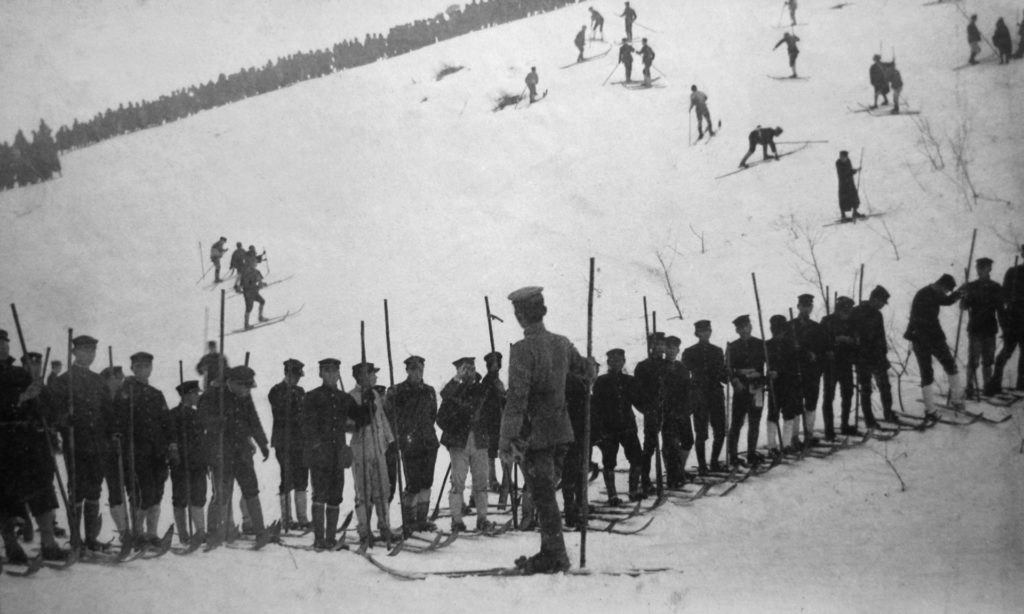
Furthermore, the introduction of skis revolutionized winter travel for people in snow-blasted towns such as Takada, where the previous option was slogging along on slow kanjiki snowshoes.
The Japanese have not forgotten Maj. Lerch. He did a great job grooming the country for skiing, but he also was a man with lucky timing. He quickly became something of a hero and remained close friends with Japanese military leaders, keeping in touch with Gen. Nagaoka until the latter’s death in 1933.
His Fuji climb inspired Russo-Japan War hero Count (and Gen.) Marasuke Nogi to compose a poem in his honor, and Lerch was later invited to attend the Count’s funeral after Nogi’s suicide following the death of the Emperor Meiji.
Then he sailed off to Korea, traveled through Asia and back to Europe, had a distinguished military career, retired, did some writing and painted watercolors and died in 1945. He was admired as a leader in military circles, but his huge contribution to skiing was completely unknown in his native country—except, perhaps, to Dr. Pöchner.
From Joetsu to Myoko in Niigata across to Nozawa and Shiga in Nagano, you can’t go far without finding statues of a proud-looking, mustachioed man, standing tall on his skis with a single long bamboo pole in his hand.
The city of Joetsu has created a “Lerch-san” manga used in promotions throughout Niigata, and a Myoko family even named their high-flying second son, a very promising high school ski jumper, Lerch (the Japanization of the name sounds a bit better, Leruhi).
All because the paths of a Japanese general with foot-long whiskers and a visiting Austrian major toting a pairs of skis met in the snowy mountains of Niigata.
Timeline: Skiing in Japan
1911 Theodore von Lerch gives the first skiing lesson in Japan in Takada, Niigata (today’s Joetsu City).
1912 Kazama begins ski production in Takada; Ogasaka ski production begins in Nagano.
1923 Mizuno begins development of domestic skis.
1930 Hannes Schneider teaches the Arlberg method of skiing in Nozawa Onsen.
1956 Chiharu Igaya wins silver in slalom at the Cortina Winter Olympics; first Japanese winter Olympic medalist.
1970 Tsuyoshi Ueki and Kazuo Hoshikawa make first descent of Mt. Denali (McKinley).
1970 Yuichiro Miura achieves first descent (though not on skis for very long—mostly by parachute) of Mt. Everest.
1972 Sapporo Winter Olympics are held (the first outside the U.S. and Europe); Japanese ski jumpers sweep the 70-meter (normal hill) competition.
Early 1990s Skiing is the leading sport among young Japanese.
1993 Number of skiers reaches a peak at 17.7 million.
1998 Nagano Winter Olympics take place; Tae Satoya becomes the first Japanese woman Winter gold medalist, in moguls.
2006 Number of skiers falls from peak to 6.1 million.
2008 Aiko Uemura is overall World Cup champion in the moguls—a Japanese first.

